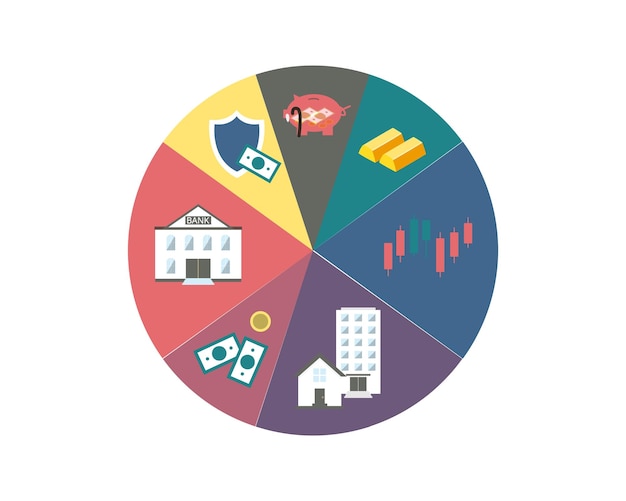Social Security Benefits in 2025: Changes & How to Prepare

Changes to Social Security Benefits in 2025 may affect retirees and those planning for retirement; understanding these changes and preparing accordingly is crucial for financial security.
Navigating the complexities of Social Security can be daunting, especially with upcoming changes to Social Security Benefits in 2025: What to Expect and How to Prepare. Let’s break down what you need to know to ensure a secure financial future.
Understanding the Current Social Security Landscape
The Social Security system plays a vital role in the financial security of millions of Americans, providing a safety net for retirees, disabled individuals, and survivors of deceased workers. To fully appreciate the significance of upcoming changes, it’s essential to first understand how the current system works and the challenges it faces.
Social Security is primarily funded through payroll taxes, with both employees and employers contributing a set percentage of earnings. These funds are then used to pay out benefits to current recipients, while any surplus is invested in government securities. The amount of benefits an individual receives is based on their lifetime earnings, with higher earners generally receiving larger payments.
Key Components of Social Security
Understanding the key components of Social Security can help you better plan for your future. Here are some important aspects to consider:
- Retirement Benefits: These are available to individuals who have worked and paid Social Security taxes for a certain number of years.
- Disability Benefits: These are offered to those who become disabled and are unable to work.
- Survivor Benefits: These provide financial support to the surviving spouses and children of deceased workers.
Despite its importance, the Social Security system faces several challenges. One of the most pressing is the aging population, as the number of retirees continues to grow while the number of workers contributing to the system remains relatively stable. This demographic shift has put a strain on Social Security’s finances, raising concerns about its long-term sustainability.
Adding to the financial strain are factors such as increasing life expectancies and wage stagnation. As people live longer, they collect Social Security benefits for a longer period, further depleting the system’s resources. The political landscape also plays a role, with ongoing debates about how to reform Social Security to ensure its solvency for future generations.

Major Changes to Social Security Benefits Expected in 2025
Several significant adjustments are anticipated for Social Security benefits in 2025, driven by both economic factors and ongoing legislative considerations. These changes are poised to affect various aspects of the program, from cost-of-living adjustments (COLAs) to income thresholds for taxation.
One of the primary drivers of these changes is the annual cost-of-living adjustment (COLA), which is designed to protect beneficiaries from the effects of inflation. The COLA is calculated each year based on the Consumer Price Index for Wage Earners and Clerical Workers (CPI-W). When inflation rises, the COLA increases Social Security benefits to help recipients maintain their purchasing power.
Projected COLA for 2025
Forecasting the exact COLA for 2025 is challenging, as it depends on inflation rates observed throughout the year. However, economists and policy analysts provide estimates based on current economic data. It is critical to understand these projections, even though they are subject to change.
- Factors Influencing COLA: Inflation rates, economic growth, and Federal Reserve policies all play a role in determining the annual COLA.
- Potential Impact: A larger COLA means higher monthly benefits for Social Security recipients, while a smaller COLA might not fully offset rising living costs.
- Historical Context: Examining past COLA values can provide insights into potential future adjustments.
Another important aspect of Social Security benefits is the income threshold for taxation. Social Security benefits may be subject to federal income tax, depending on the recipient’s other sources of income. The income thresholds that trigger taxation are adjusted periodically, and potential changes in 2025 could affect a significant number of beneficiaries.
The intricacies of Social Security taxation depend on the beneficiary’s combined income, which includes adjusted gross income, nontaxable interest, and one-half of Social Security benefits. For individuals, if this combined income exceeds $25,000, up to 50% of Social Security benefits may be taxable. For couples filing jointly, the threshold is $32,000.
How Cost-of-Living Adjustments (COLAs) Work
Cost-of-living adjustments (COLAs) are an essential component of Social Security, designed to protect retirees and other beneficiaries from inflation. Understanding how COLAs work can help individuals better anticipate changes in their benefit amounts and plan their finances accordingly.
The primary goal of COLAs is to ensure that Social Security benefits keep pace with rising prices. Without COLAs, the purchasing power of benefits would erode over time, making it more difficult for recipients to afford essential goods and services.
Calculating the COLA
The annual COLA is determined using the Consumer Price Index for Wage Earners and Clerical Workers (CPI-W). The CPI-W measures changes in the prices of goods and services typically purchased by urban wage earners and clerical workers. The Social Security Administration (SSA) uses the CPI-W to calculate the percentage increase needed to maintain the real value of benefits.
The calculation typically compares the average CPI-W from July, August, and September of the current year to the same period of the previous year. The percentage increase between these two averages becomes the COLA for the following year. For example, if the CPI-W increases by 3% between the two periods, Social Security benefits will increase by 3% starting in January of the following year.
- Frequency of Adjustments: COLAs are typically announced in October and take effect in January of the following year.
- Impact on Benefits: A higher COLA means a larger increase in monthly benefits, while a lower COLA results in a smaller increase.
- Limitations: The CPI-W may not perfectly reflect the actual expenses of all Social Security recipients, particularly those with unique spending patterns or healthcare needs.
The history of COLAs in Social Security reflects periods of both high and low inflation. During times of high inflation, COLAs have been substantial, helping beneficiaries keep pace with rising costs. Conversely, during periods of low inflation or deflation, COLAs have been smaller or even zero. For example, in some years during the Great Recession, there was no COLA due to declining prices.
While COLAs provide important protection against inflation, there are ongoing debates about whether the current method of calculation accurately reflects the true cost of living for seniors. Some argue that the CPI-W understates inflation for seniors, as it does not adequately account for rising healthcare costs and other expenses unique to older adults.

Strategies to Maximize Your Social Security Benefits
Maximizing your Social Security benefits requires careful planning and a thorough understanding of the rules and options available. By making informed decisions, you can potentially increase the amount of benefits you receive over your lifetime.
One of the most fundamental strategies is to work for as many years as possible. Social Security benefits are based on your lifetime earnings, so the more years you work and contribute to the system, the higher your potential benefits will be. The SSA calculates your average indexed monthly earnings (AIME) using your 35 highest-earning years.
Key Strategies for Benefit Optimization
Here are some more great ways to boost your benefits:
- Delay Claiming Benefits: Delaying your benefits until age 70 can significantly increase your monthly payments.
- Coordinate with Your Spouse: Married couples have several options for coordinating their benefits to maximize their combined income.
- Understand the Impact of Working While Receiving Benefits: Working while receiving Social Security benefits can affect your payments, particularly if you are under full retirement age.
Delaying claiming Social Security benefits is another powerful strategy. You can start receiving benefits as early as age 62, but your monthly payments will be reduced. If you delay claiming until your full retirement age (FRA), you will receive your standard benefit amount. However, if you delay claiming until age 70, you will receive an even larger monthly payment, thanks to delayed retirement credits.
For married couples, coordinating Social Security benefits can be particularly advantageous. One strategy is for the higher-earning spouse to delay claiming benefits until age 70, while the lower-earning spouse can claim benefits earlier. This can provide the couple with a steady stream of income in the near term, while also maximizing the higher-earning spouse’s future benefits.
Planning for Retirement with Potential Social Security Benefit Changes
As changes to Social Security benefits loom in 2025, proactive retirement planning becomes more critical than ever. Individuals need to assess their financial situation, adjust their retirement strategies, and explore alternative sources of income to ensure a secure future.
One of the first steps in planning for retirement is to assess your current financial situation. This includes evaluating your savings, investments, and other assets, as well as estimating your future expenses. Creating a detailed budget can help you understand your income needs and identify areas where you can potentially save more.
Adjusting Your Retirement Strategy
Potential changes to Social Security benefits in 2025 may require some adjustments to your retirement strategy.
Diversifying your retirement savings is also essential. Relying solely on Social Security benefits may not be sufficient to cover your expenses in retirement, especially if benefits are reduced or COLAs do not keep pace with inflation. Consider investing in a mix of stocks, bonds, and other assets to diversify your risk and increase your potential returns.
- Consider Consulting a Financial Advisor: A financial advisor can provide personalized guidance based on your individual circumstances.
- Explore Part-Time Work: Many retirees find that working part-time not only provides additional income but also helps them stay active and engaged.
- Evaluate Your Housing Options: Downsizing or relocating to a more affordable area can free up significant financial resources.
The Political and Economic Factors Influencing Social Security
The future of Social Security is influenced by a complex interplay of political and economic factors. Understanding these forces can provide valuable insights into the potential direction of the program and the challenges it faces.
Political debates over Social Security often center on the long-term solvency of the system. As the population ages and the number of retirees increases, policymakers face difficult decisions about how to ensure that Social Security can continue to pay benefits to future generations.
There are several potential reform options that have been proposed over the years.
- Raising the Retirement Age: Increasing the age at which individuals can claim full Social Security benefits.
- Adjusting the COLA Calculation: Using a different measure of inflation to calculate the annual cost-of-living adjustment.
- Increasing the Payroll Tax: Raising the amount of Social Security taxes paid by workers and employers.
Economic conditions also play a significant role in shaping the future of Social Security. Economic growth can boost payroll tax revenues, while recessions can strain the system’s finances.
| Key Aspect | Brief Description |
|---|---|
| 💰 Potential Benefit Changes | Adjustments to COLA and income thresholds may affect payout amounts. |
| 📈 COLA Impact | Cost-of-Living Adjustments are crucial for maintaining purchasing power. |
| 📅 Retirement Planning | Assess financial situation and explore alternative sources of income. |
| ⚖️ Political Factors | Legislative changes and economic policies affect Social Security’s future. |
Frequently Asked Questions
▼
The changes could influence your benefit amount, so it’s wise to review your financial projections. Consider potential adjustments to COLA and income thresholds to ensure your retirement stability.
▼
The optimal age varies depending on your financial needs and health. Delaying benefits increases your monthly amount, while claiming early provides immediate income. Assess your personal situation carefully.
▼
Yes, Social Security benefits may be subject to federal income tax, depending on your other income sources. The taxation threshold is based on your combined income, including adjusted gross income and nontaxable interest.
▼
To maximize your benefits, work as long as possible, delay claiming benefits until age 70 if feasible, and coordinate with your spouse if married. Understand the impact of working while receiving benefits.
▼
If you’re concerned, diversify your retirement savings, consider consulting with a financial advisor, and stay informed about potential legislative changes. Proactive planning can help mitigate any potential negative impact.
Conclusion
Understanding the potential changes to Social Security Benefits in 2025 and planning accordingly is crucial for a secure financial future. By staying informed, assessing your financial situation, and making proactive decisions, you can navigate the evolving landscape and ensure a comfortable retirement.





